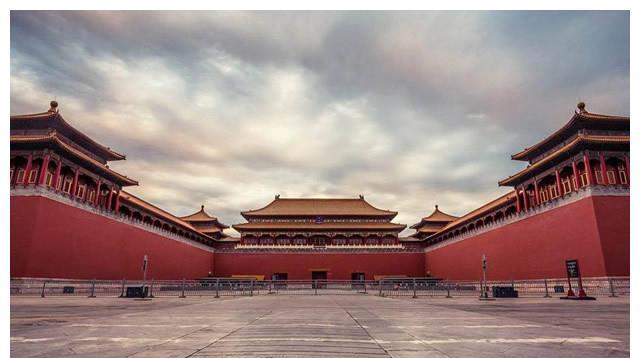The Forbidden City, also known as the Forbidden City, was the imperial palace of the Ming and Qing dynasties. The Forbidden City was built in the fourth year of Yongle (1406) of the Ming Dynasty and completed in the eighteenth year of Yongle (1420), and the entire project took fourteen years and employed millions of civilian workers. The Forbidden City is extremely high-quality, so even some of the most inconspicuous things strive to be perfect. Today we will talk about the most overlooked, but by no means ordinary objects in the Forbidden City - bricks.

Some people may think that bricks can be seen everywhere, even in the Forbidden City, how rare can this thing be? Not really. The bricks in the Forbidden City have very strict standards in terms of quality and specifications, for example, a brick that is very common in the palace weighs forty-eight pounds, which is far heavier than the bricks that we can touch in ordinary life. Moreover, each brick will be engraved with information such as the age of firing, the name of the firing kiln factory, the name of the craftsman, and the name of the overseer. If you find that there is a problem with the brick in the future, it is easy to find out who is responsible.
In addition, all the tribute bricks in the Forbidden City, although like other bricks, are of mud origin. However, its mud is selected from specific locations, and the tribute brick making process is complicated and cumbersome, and it takes a long time. This is all incomparable to ordinary bricks.
The bricks used in the Forbidden City were mainly from the southern provinces, and according to historical records, the prefectures that specialized in firing tribute bricks at that time were: Yangzhou Prefecture: Jiangdu, Yizhen, Taixing, Gaoyou, Xinghua, Haimen, Liuhe; Huai'an Province: Andong, Haizhou, Ganyu; Zhenjiang Province: Dantu, Danyang, Jintan; Anqing Province: Huai'an, Tongcheng, Qianshan, Taihu; Nanchang Province: Nanchang, Xinjian, Jinxian, Fengxin, Wuning; Guangxin Province: Leadshan, Yongfeng; Jianchang Province: Nancheng; Fuzhou Province: Linchuan; Ji'an Province: Luling, Jishui, Anfu, Wan'an, Yongning GanzhouFu: Ganxian, Huichang; Linjiangfu: Qingjiang, Xinyu; Jiujiangfu: Ruichang; Yuanzhoufu: Yichun; Ningguofu: Xuancheng; Hengzhoufu: Changning; Dongchangfu: Linqing; Shuntianfu: Changpingzhou, Tongzhou, Zhuozhou, Fangshan.
Careful readers may find that the geographical location of these prefectures (except Suncheon Province) is on the ancient water transport main road, which is actually to facilitate transportation. At that time, the Ming Dynasty government stipulated that all grain ships must carry thirty bricks, otherwise they were not allowed to release and pass through the checkpoint. Although from the numbers, thirty bricks is easy, but as mentioned above, each brick weighs forty-eight pounds, and thirty is about fourteen hundred and forty pounds. This additional burden is not an easy task for a grain carrier that is itself fully loaded.
Among all the bricks used in the Forbidden City, there are two bricks from the most important places, namely the Linqing tribute bricks produced in Linqing in Shandong and the Suzhou bricks produced in Suzhou, Jiangsu.
Linqing gong bricks are fired with fine mud (commonly known as "lotus soil") stirred by the Yellow River and canals, which are solid and fine, not alkaline and no erosion. Since the quality of Linqing tribute bricks is significantly higher than that of other brick kiln factories, since the middle of the Ming Dynasty, Linqing tribute bricks have become the main material for building the imperial palace. In addition, The imperial tombs, city walls, royal palaces, and temples in Beijing also use a large number of Linqing tribute bricks. It is worth mentioning that the architectural bricks of mausoleums and temples are often marked with special words to distinguish them from the bricks used in the palace, not because there is any difference in quality between the two, but because the ancients believed that the supplies of mausoleums and temples could not be mixed with the supplies of living people.
Suzhou bricks are floor tiles dedicated to the interior of the imperial palace hall. This kind of square brick is made by going through a special process and firing repeatedly. The whole process includes soil extraction, billet making, firing, kilning, grinding and soaking, and the final quality requirement is "knocking sound, no hole in the break". Each firing of a kiln of Suzhou bricks takes about half a year, and the cost of each brick is equivalent to one or two gold, so Suzhou bricks are also known as "golden bricks".
The floor tiles of the most important hall in the Forbidden City are paved with "golden bricks". For the purpose of protecting cultural relics, the main hall on the central axis of the Forbidden City is not allowed to enter, so everyone can only stand outside the door to experience the feeling of the golden brick ground. However, some time before reading the history books at night, I visited the Forbidden City and found that the Fengxian Hall (that is, the current Clock and Watch Hall) also used "golden bricks", if you want to experience the feeling of stepping on the "golden bricks" at zero distance, you can go to the Fengxian Hall to see.
Reference: "The Record of the Two Palaces"